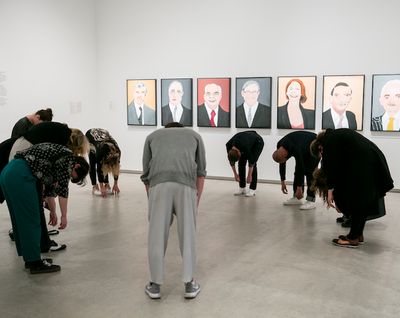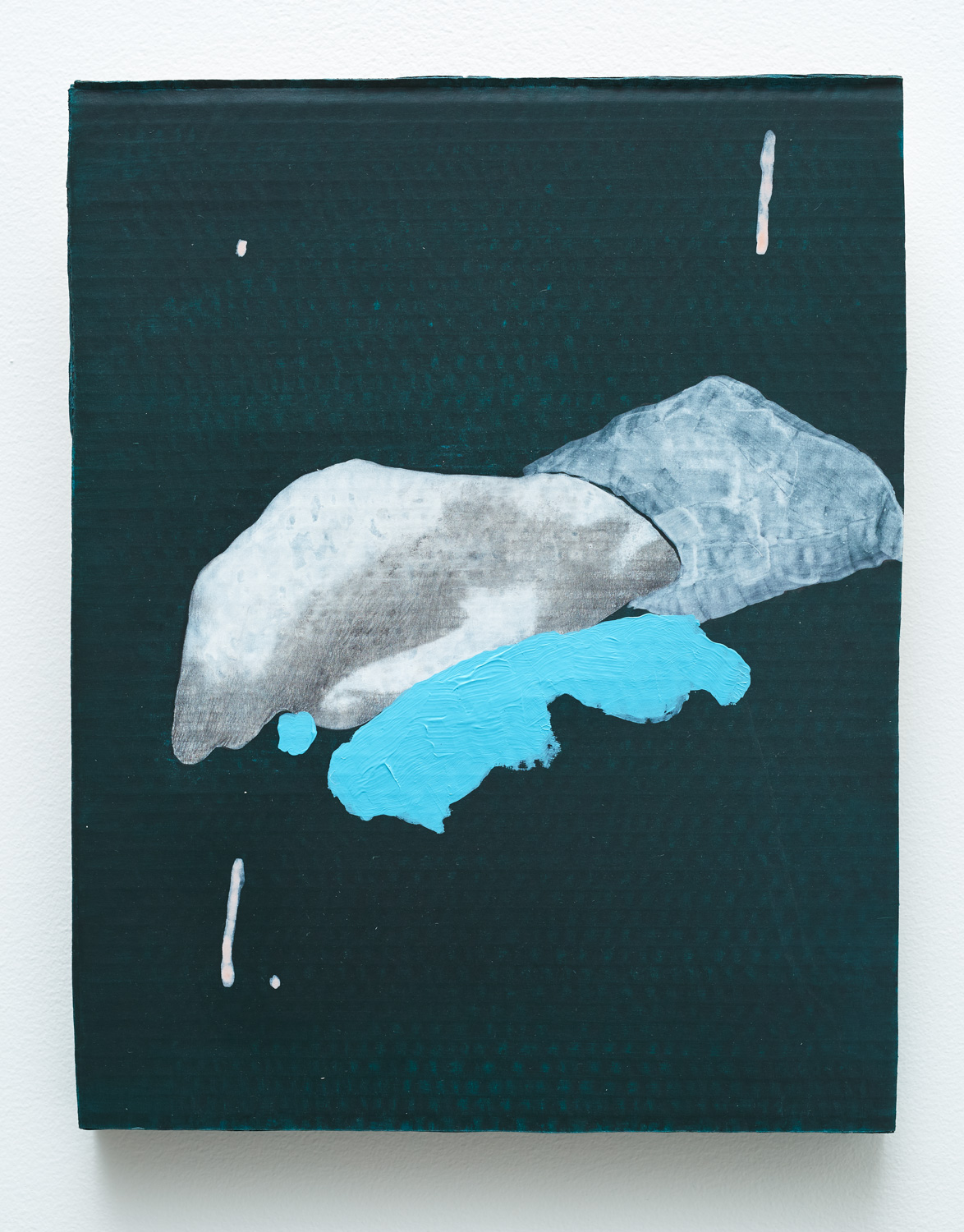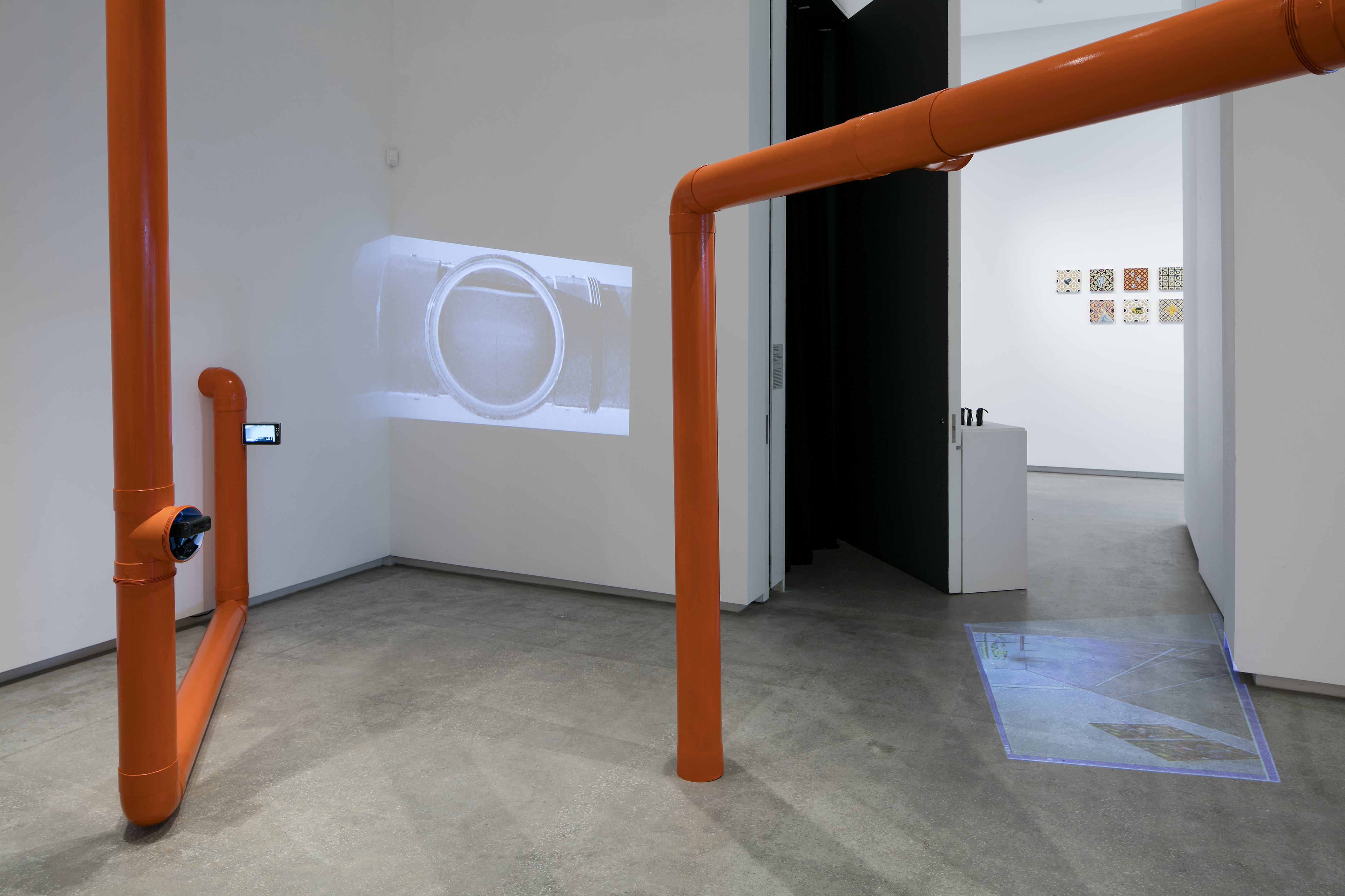Ocula Report: TarraWarra Biennial 2016

A noticeable trend has emerged on the biennale circuit of curatorial collaborations between publications and exhibition makers. Take for example Okwui Enwezor’s 56th Venice Biennale in 2015, which included a newsletter project by e-flux titled ‘Supercommunity’, and the appointment of the collective behind DIS Magazine as curators of the 2016 Berlin Biennale for Contemporary Art. Most recently, the TarraWarra Biennial, which is showing from 18 August to 6 November 2016 at the TarraWarra Museum, situated just on the outskirts of Melbourne, took a multi-disciplinary approach to the biennial format. It involved the Museum’s director Victoria Lynn coming together with Helen Hughes, the editor of the Melbourne-based Discipline magazine, to consider the common elements of periodical publishing and biennial exhibition making and collaborate to produce this year’s Biennial.
Titled Endless Circulation, the TarraWarra Biennial takes ideas excavated from this collaboration, such as notions of continuity and pauses, to form the binding thread between the works in the show. The curatorial premise is used loosely and broadly, with works tapping into the theme at various micro and macro levels. There are also moments of tension and disruption, and strong political components, with artists considering indigenous histories and how they reverberate into the present. Some works consider the looping influence within artistic practice, while others involve materiality: the bones of the museum are taken as both subject matter and material to embellish and test. The sensory is also evoked through works that have smell and voice components, affecting the visitor’s circulation of the gallery space.

In many works, the idea of the past informing the present is used as a lens to address the ongoing effects of colonisation. A series of paintings by Vincent Namatjira is one of the most visually arresting works to reference this idea. On entering the exhibition, the viewer is faced with the figurative portrait Queen Elizabeth and Captain Cook, (2015), and Captain Cook’s Dinner Party, (2015), which ironically features Cook and Vincent sitting at a table laden with food and wine. To the left are seven paintings depicting the Australian Prime Ministers who have held office since the artist’s birth. Fleshy and toothy with mild caricature, they look like official portraits gone comically array. Placed next to each other, they suggest successive terms of government (a structural premise that resonates with the idea of a periodical journal or biennale) and the continuation of colonialism through such iterations. In a similar vein, Ryan Presley subverts state iconography. Ryan is interested in the way money acts as a form of propaganda as it circulates through society. In Blood Money, 2014, he creates his own currency, replacing the Anglo-Saxon figureheads with Aboriginal activists. These banknotes have been placed in the TarraWarra ticket office till and visitors are able to obtain them in exchange for Australian dollars.

Vernon Ah Kee’s work authorsofdevastation (2016) utilises the English language, which has operated as a centrifugal colonial force. Ah Kee complicates the act of reading by verbally tripping up the viewer. The work features bold red text, on a black backdrop, taken from The Fire Next Time by the African-American author James Baldwin, whose work explores race relations in America. An extract, which begins with ‘this is the crime of which I accuse my countrymen’ is written with the spaces between words omitted, causing the reader to stumble. Also employing language, yet within a migration as opposed to colonial context, are hypnotic works by Eugenia Raskopoulos: Rootreroot (2016) and Routereroute (2016). Rootreroot is a work featuring two videos, both filmed via using a drone. One video depicts a woman dragging an olive tree around a green field in a clockwise direction. The other video features the same woman pulling a wattle tree counterclockwise. Routereroute mirrors this circular graphic nature, spelling out the title of the work in red neon circles: one in Greek (the artists’ heritage) and one in English. When considered metaphorically, the struggle of migration and language could be viewed as an ongoing laborious project without means of final resolution.

When considering the themes of dispersion and continuation, All Welcome: Gate, Paper Tributes, Lectern (2015) by Susan Cohn emphasises a congealed point in the free-flow circulation of people in a globalised era. The work consists of two collaged photographs placed on the wall beside each other. They each depict a fence and a gate, and beyond a drab institutional building, which could be read as a detention centre for asylum seekers. Laid out on the ground in front of the images (and effectively before the gates) are shredded bundles of newspapers; they are bound like hay and all contain articles on asylum seekers. At the very front of the work is a lecturn. The work suggests private acts of welcoming which exist in households and communities, taken to a national level. This work is emotionally powerful, calling to mind the current situation that sees refugees seeking asylum in Australia held indefinitely on the Pacific island of Nauru.
While these works speak of wider social and political issues, others take a different focus, such as that by Masato Takasata who employs self-referential circulation as a framework for his art-making practice. Also a musician, Masato uses the ‘back catalogue’ of his work to create new presentations that reveal the history of its making. The bulk of his work in the Biennial is an installation marked off by tape with the same angular lines that appear in his paintings, and comprises a model of the TarraWarra Museum and various makeshift assemblages. Within these structures sit objects particular to artistic labour, alluding both to the practical side, such as museum wax, and the interpretive and social, seen for example in a poster containing an essay about his work by Damiano Bertoli. Two large abstract paintings, consisting of bright colours in prismatic shapes, appear identical and sit side by side, the brackets in the titles state, ‘(Garage Days Re-visited 1994)’ indicating that they are also re-hashings of past works.

Circulating man-made systems are brought into focus in Conduit (2016) by Biljana Jancic. The work consists of a series of imposing PVC pipes painted red and emerging from the floors and wall. They are sculptural interpretations of the engineering systems hidden behind walls, such as air conditioning, electrical wiring and sewage. On one of the pipes is a mini-projector containing recorded CCTV footage of Masato installing his work, while another camera shows a live recording of folders in the museums office that contain exhibition archives. The result is a considered imagining of the mechanics and functions of the museum that works to conflate time.
Debris Facility also engages with the structure of the museum, but creates works that acutely interact with its systems. His inclusion consists of three parts that rest under the title Excipient (2016–22). For Pivot, the museum’s door has been encrusted with natural and synthetic materials, from pumice to plastic, which have the appearance of sci-fi coral. Absorption involves a Möbius-shaped aluminium sculpture that hangs on the ceiling near the air-conditioning vent. The surface of the work is activated with charcoal that becomes more heavy and toxic over the course of the exhibition. As if to conclude, Disintegration features charcoal soap that has been placed for use in the museum’s bathrooms, implicating visitors with the museum’s structure and the pipes that lead outside its parameters.

Centripetal and centrifugal dissemination takes a bodily focus in Saskia Doherty’s work silicate silicate silicate (2015). While the works discussed above consider the metaphorical lungs of the museum, in this audio piece the artist uses her lungs as material. Doherty reads aloud the words listed in an Afrikaans-Falakalo dictionary on mining between deliberately laboured inhalations and exhalations. Her voice creates iterations of visceral raspings that acutely draw attention to the act of breathing. Alicia Frankovich's work World is Home Planet (2016) also engages with non-visual senses, and links the human to the celestial. The visitor is invited to explore, with a torch, a self-contained dark room containing oranges. The viewer can eat the oranges and also is permitted to discard any scraps on the floor, directly engaging the senses of taste and smell in their experience of the work. The wall text states that by connecting to senses other than the visual the artist aims to slow down the circulation of the gallery visitor who, according to research, averages 30 seconds in front of an artwork. The room also contains microscopic photographs of apples and carrots and an image which appears as a galaxy constellation, which the wall text describes as creating an ‘anti-anthropocentric perspective’ where humans are no longer the central focus.
With consideration of the flow of people, breath, materials and language, the metaphor of circulation is diverse and enigmatic. Without a finite curatorial position, the works shine through on their own terms and are not blanketed by didactic readings. Although bringing the new medium of a magazine into the exhibiting dynamic has not innovated the framework of the exhibition, the consideration that Lynn and Hughes have taken in their collaboration has meant that Endless Circulation is rich and diverse in application. —[O]










































































































































































